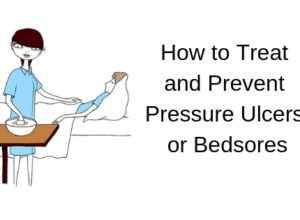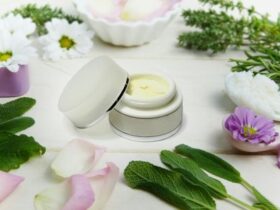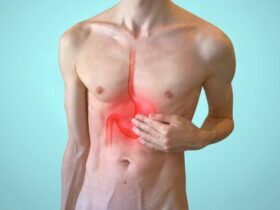What are Pressure Ulcers or Bedsores?
Pressure Ulcer occurs mostly on the skin that covers bony areas of the body with little muscle and fat. Pressure Ulcers are also known as Bedsores, Decubitus Ulcer and nowadays people know it as Pressure injury or Pressure Sore. It is injury that affect the skin as well as the layers underneath. People who spend most of their time on a wheelchair or in bed suffer a sustained pressure over an area of skin for a prolonged time. Due to lack of any movement, adequate blood flow to the skin is hindered, and the affected skin area is deprived of oxygen and nutrients. Hips, tailbone, ankles, and heels are the most common body parts where bedsores commonly develop. Majority of pressure ulcers are treatable but some leave marks for the rest of life. Few of bedsores heal automatically with time.
What Causes Pressure Ulcers?
Pressure Ulcers can develop on the skin due to following reasons
- Pressure from Outside
External pressure applied over a small section of the body, particularly over the bony prominences result in obstruction of the blood capillaries, causing ischemia (deficiency of blood in a very explicit area), edema, inflammation, and, finally, gangrene and lesion formation. Pressure Ulcers because of external pressure occur over the skin and bone.
- Friction
Bedsores due to friction in the skin develops due to wrong choice of shoes, clothes, or disturbed walking patterns. The friction builds fragile skin which is liable to injury, particularly if the skin is damp.
- Shear
Shearing causes separation of the skin from underlying tissues. Once a patient is partly sitting up in bed, their skin might persist with the sheet. This can lead the skin to cut off just in the case underlying tissues move downward with the body toward the foot of the bed. Blood vessels are pulled and stretched as tangential force is applied to tissues.
- Temperature and micro-climate
Humidity, moisture due to sweat, urine or faeces and skin temperature at the interface between skin and the surface of the bed or wheelchair can lead to pressure ulcers. When the temperature of skin rises, the metabolic needs of the skin for oxygen and glucose rises. Bedsores develop when these additional requirements are not met due to disruption of blood flow to the area.
What are the risk factors of pressure ulcers?
Factors such as limited mobility, poor diet/nutrition, urinary incontinence, obesity and old age increases the risk of developing pressure ulcer.
What are Symptoms of Pressure Ulcer?
Other than pain and discomfort, pressure ulcers may lead to infections such as meningitis, cellulitis, and endocarditis. Bedsores or Pressure Ulcers are classified in 4-Stages. Keeping stage IV very dangerous to stage I as initial effects. To identify the stage of pressure ulcer, you can see details here.
Stage I of Pressure ulcers are characterized by reddish or dark discoloration of the skin area. When the pressure ulcers progresses without detection to stages II, III, and IV, there may be deeper involvement of muscles, bones and joints. Location and intensity of pressure ulcer depends on the laying position of the individual, the amount of pressure applied, and the time duration for which the position has been maintained.
- Stage I: Pressure Ulcer generally develops over the skin which can be seen with naked eyes. In starting these are red or pink spots if your skin is light but its color may vary from blue to purple if your skin color is dark. The pressure ulcer itself may appear white. The symptoms include pain, itching, and burning sensations.
- Stage II: The skin looks injured and you can notice some damage to the skin tissues near the pressure sore. There might also be a vesicle filled with white fluid. The pressure sore feels like a cushion and it does not have a depth into the skin. It becomes painful from here.
- Stage III: In this stage, the pressure ulcer becomes a deep hole into the skin. The hole may also contain some type of pus. The ulcer damages fat layer and looks like a bump on the skin. Symptoms include drainage of pus and redness around the edge of the ulcer.
- Stage IV: In this stage, the pressure ulcer gets deeper into the skin and it starts to damage the multiple layers of the tissue. A black substance named as eschar may also develop in the bedsore due to which skin turns black. The stage IV is the most painful stage of pressure ulcer. Bones and muscles may become visible during this stage.
How to Prevent Pressure Ulcers or Bedsores?
Pressure Ulcers can be prevented by below methods:
- Change positions frequently to relieve the pressure on skin areas that are likely to develop pressure ulcers. Bedridden patients are advised to reposition their body every couple of hours to avoid pressure ulcers. Use footrests, armrests and other supports that can create good posture and right sitting or lying positions.
- Alternating air pressure mattresses, wheelchair seat cushions, shoe pads, elbow protectors and moisture wicking clothing to prevent high skin temperature and humidity which can lead to skin breakdown and rashes. Therapeutic low air loss mattress system and alternating air pressure mattress are best for treatment of pressure ulcers. Air cushions can be used to disperse weight and minimize pressure points. Keep pillows and foam cushions between parts of your body that rub against each other. You can place the pillow between your knees and ankles if you prefer to lie down on your side. Pressure ulcers often develop on heels which is a relatively bony area. Heel cushions and heel pads can protect heels and ankles from skin irritation and friction burns.
- Regular skin inspection and skin care prevent pressure ulcer development. Use skin cleansers to keep your skin, especially genital area, skin folds and hard to reach places. You can use mild soap and lukewarm water to clean the skin with. Water-based moisturizer and a bedsore cream can be used to prevent pressure ulcers.
- Rugs, underlays and cushion covers made of sheepskin or lambskin have numerous medical benefits. Using sheepskin products can help prevent pressure ulcers. Apart from being soft and comfortable, sheepskin regulates body temperature, minimizes moisture and limits shearing of delicate skin areas.
- Healthy diet and exercise can prevent pressure ulcers. Simple range-of-motion exercises like arm lifts and leg rotations can increase the heart rate and blood circulation for prevention of pressure ulcers. Vitamin supplements can be included in diet in case of deficiency.
How to Treat Pressure Ulcers or Bedsores?
Minor pressure ulcers heal on their own within few weeks. Other than pain and discomfort, pressure ulcers may lead to infections such as meningitis, cellulitis, and endocarditis. Pressure Ulcer prevention and treatment can be further complicated by risk factors such as smoking or alcohol addiction and the presence of long term ailments like diabetes, heart diseases, malnutrition, etc.
These are some steps you can follow to treat pressure ulcers:
- Remove the pressure: In order to get cured of pressure ulcer, firstly, you are needed to remove the pressure from the bedsore. This can be done by using foam pads and cushions.
- Clean the wound: Cleaning the wound is a very important step to follow because old uncleaned wound may lead to dangerous infections. A small wound can be cleaned gently using water. Open skin should be cleaned every single time the wound dressing is changed.
- Apply the Pressure Ulcer Dressing: Application of pressure ulcer dressing is very necessary as an open wound may lead to many serious infections. Some special bedsore wound dressings such as hydrocolloid dressings, hydrogel dressings, honey dressings and foam dressings can speed up the healing process by removing the dead tissue. ConvaTec DuoDERM hydrocolloid dressings can be useful in treatment of pressure ulcers of all stages.
- Use antibiotics: Use antibiotics and anti-bacterial dressings regularly as prescribed by your doctor. This will help to fight the infection and promote wound healing.
What Happens if Pressure Ulcers or Bedsores Are Left Untreated?
Untreated and late stage pressure ulcers can prove to be fatal due to complications such as sepsis, bone infections and blood poisoning. Deep or late stage pressure ulcers require surgical removal of dead and debridement. Consult your doctor or physical therapist immediately if symptoms of pressure ulcer deteriorate.
Disclaimer: The article is solely for informational purposes. It cannot be used for the purpose of diagnosis or treatment of any medical conditions. The content is not meant to be used as a substitute for advice from a certified medical professional.

I am a world enthusiast, pursuing engineering in Electronics. I write on health and travel niche occasionally. I have written for several tech blogs and news websites. I have also worked as a marketing advisor. When I am not working, I study or play video-games and have an extra slice of pizza.














Leave a Reply